Corsair Obsidian 750D Case Review
by Dustin Sklavos on September 24, 2013 6:00 AM EST- Posted in
- Cases/Cooling/PSUs
- Corsair
- ATX
- Case
While Corsair cases are almost uniformly excellent for liquid cooling and the Obsidian 750D will no doubt be another success story in that respect, the monkey on Corsair's back has always been air cooling performance. Outside of the appropriately named Carbide Air 540, none of their cases has really had excellent air cooling, but up until the full fat testbed, Corsair's balanced approach with the 750D actually does a pretty solid job.
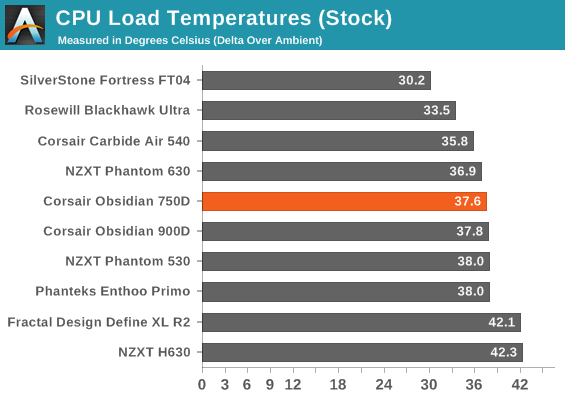

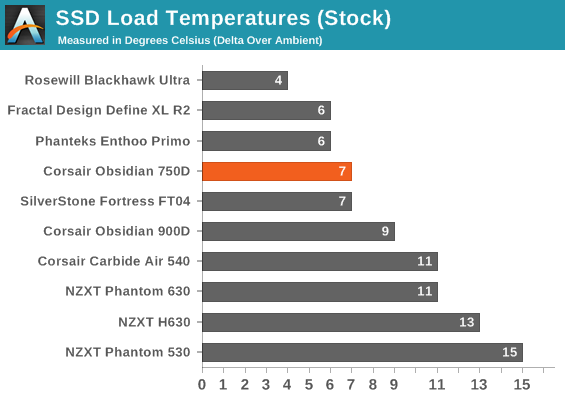
Stock air cooling performance is at least pretty respectable and competitive. It's not the monster that, say, the Air 540 is (let alone the SilverStone Fortress FT04), but it holds its own.
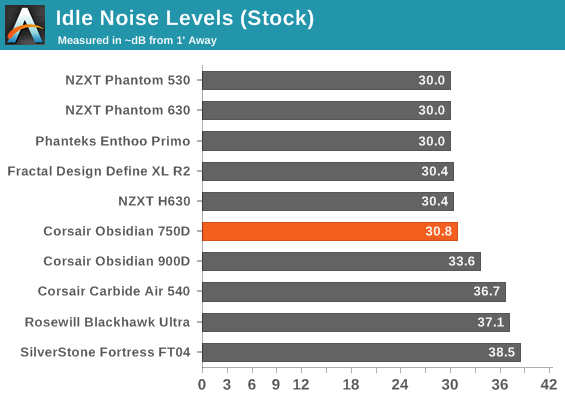
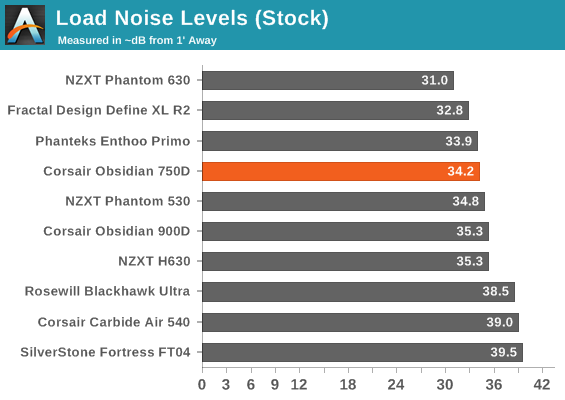
For at least stock testing, the Obsidian 750D is able to hit that middle ground pretty nicely. Load noise is better than a lot of the competing cases; SilverStone's FT04 has worlds better thermals on the CPU, but it's much louder in the process (though it can be tuned to a more pleasing balance of noise and performance depending on the end user's taste.)
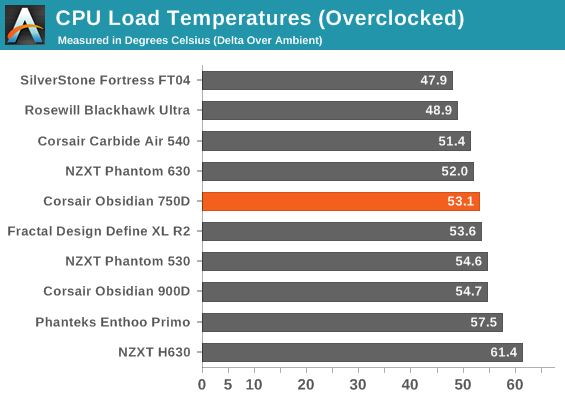
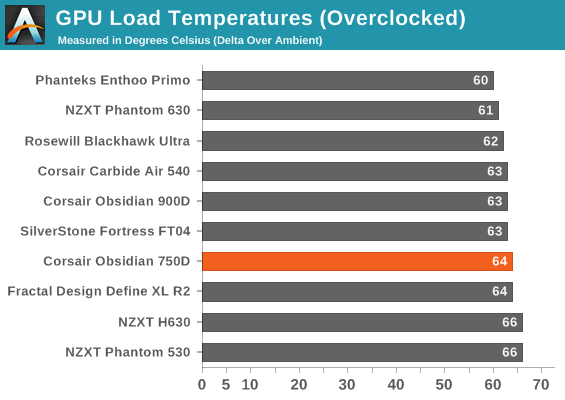
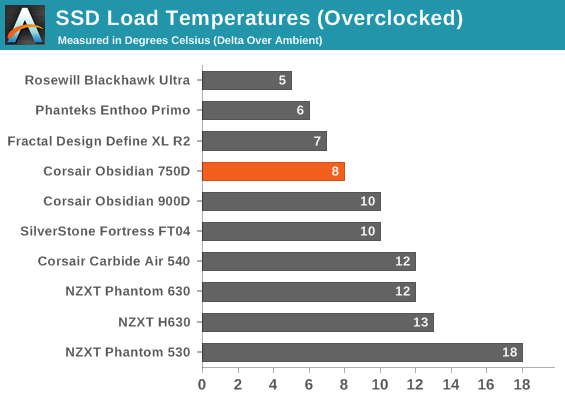
Overclocked thermal performance is surprisingly strong. The 750D isn't leading the pack, but it's posting closer to the top and maybe a degree and a half behind the beefier Air 540.
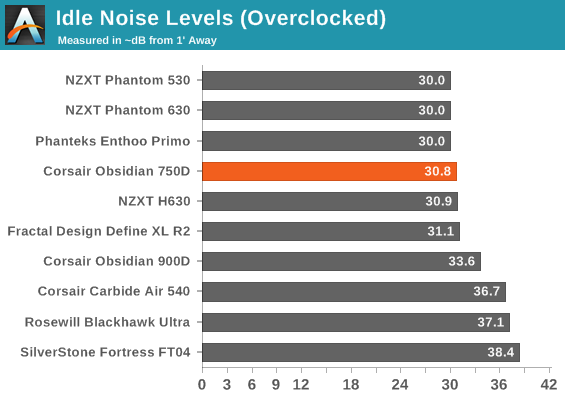

Noise levels prove to be a victory for Corsair, but they're still struggling to beat NZXT's Phantom 630, which runs both quieter and cooler. This is a step in the right direction and the difference between the cases is small enough that you can probably go with whichever you prefer. Corsair really needs to step their game up to compete with NZXT, though; Corsair makes arguably better liquid cooling cases, but NZXT doesn't make you choose.
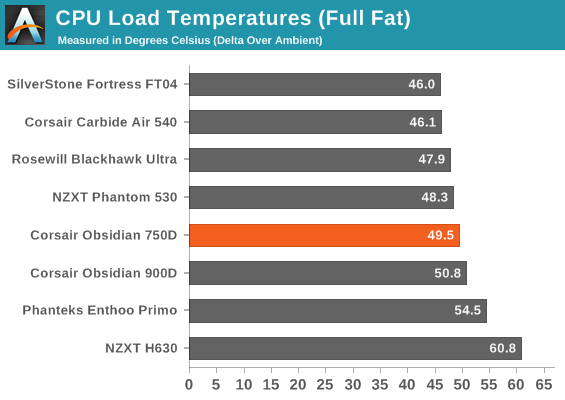
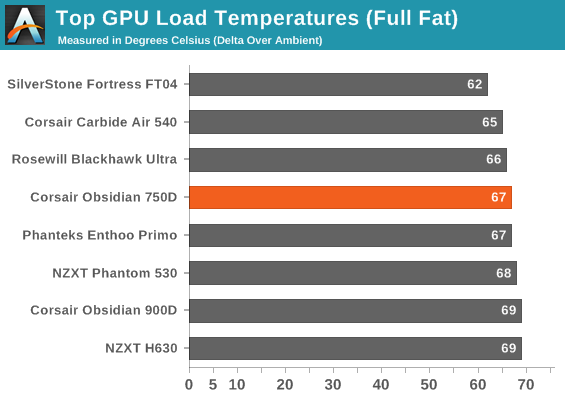
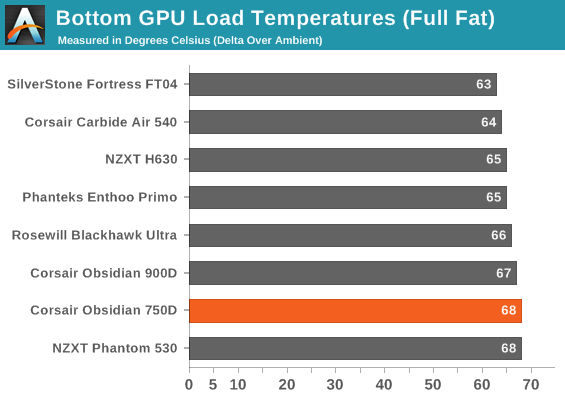
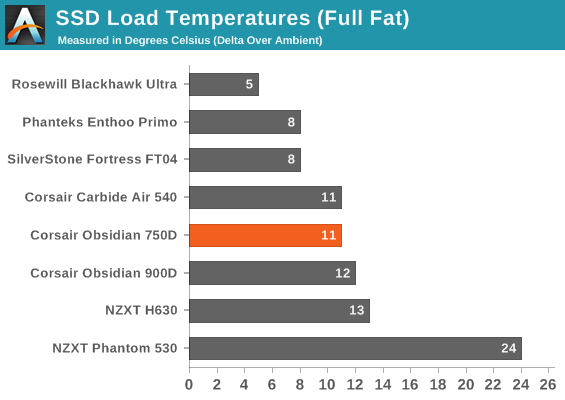
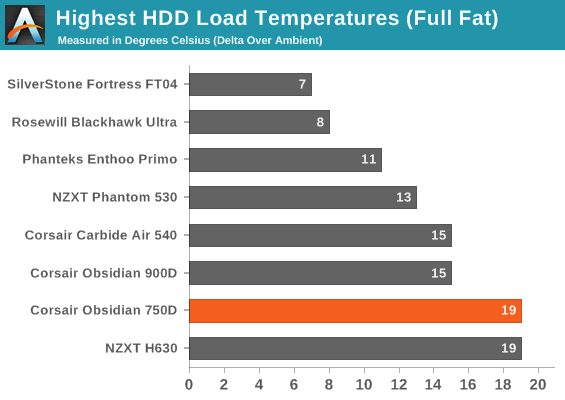
Our full fat testbed unfortunately hits the limits of the Obsidian 750D's stock cooling configuration. Thermals are mostly competitive but measurably weaker than the competition. The traditional ATX layout typically just plain needs more airflow when faced with this much of a thermal load.
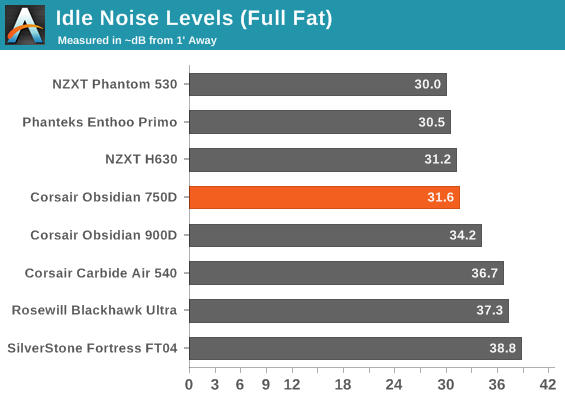
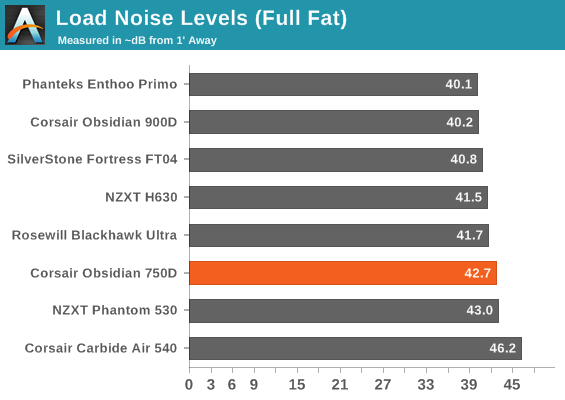
The 750D winds up being one of the louder cases as a result. Corsair's thermal target clearly wasn't something as grueling as this type of system, but this highlights the value of having either PWM fans or a built-in fan controller. Either will allow the case to be more flexible in terms of the systems it can support instead of starting to hit limits.










40 Comments
View All Comments
alincioaba - Tuesday, September 24, 2013 - link
The 3.5" cages are stackable that's good... my question is can you add an extra one (provided that corsair will sell you one)?garadante - Tuesday, September 24, 2013 - link
Sure looks like it, as that's what they offered with the 900D. Perhaps the drive cages are even identical? I know the 900D came with 2 or 3 drive caves but you could have 5 installed total I think.Grok42 - Tuesday, September 24, 2013 - link
Not my choice of case for other reasons but I have to give them a lot of credit for being able to stack cages and selling additional ones. Now if they would only sell 2.5" in addition to 3.5" cages.BillyTheBigBone - Friday, February 14, 2014 - link
yes you can. I ordered one from them.Alan G - Tuesday, September 24, 2013 - link
In this day and age, two USB 2.0 along with two USB 3.0 ports on the front panel? Why?DanNeely - Tuesday, September 24, 2013 - link
At $159 "it's cheaper" isn't a good excuse; but I'm sure that's still part of it. Probably Corsair's explanation if asked would be that a lot of mid range mobos still only have a single USB3 header and very few people would be plugging in 3 USB3 devices at once anyway.IMO the better option would be to include either a short adapter cable to connect a USB3 cable to a USB2 header, or to wire the second connector onto the cable itself like the dual connector cable you often see on front panel audio. I'd prefer the first option because it lets people with 2 USB3 headers toss the adapter in their junkbox and have a cleaner build.
Liquid_Static - Tuesday, September 24, 2013 - link
What else is going to go there...LB-ID - Tuesday, September 24, 2013 - link
I was doing a fresh Win7 install on a new computer the other day, couldn't figure out why the keyboard and mouse kept going dead during the install process. Figured out it was lack of USB3 support on the OS, so was very very happy to have a couple of USB2 ports on my Nanoxia DS1. Sometimes it pays to have backwards compatibility available...Threnx - Tuesday, September 24, 2013 - link
I would like it a lot more without the gaudy window. It's 2013, who still thinks those look good? They should go the way of lighted LED fans.flemeister - Tuesday, September 24, 2013 - link
Not you, evidently! =DI love the look of a clean side panel window, free of any ugly fan grills. And anyway, it's 2013, where an all-black interior is now pretty much standard for ATX cases. More and more PSU's come with decent looking cables, whether just black insulation on the wiring, or braided sleeving installed by default. And it's *very* easy to find nice looking motherboards and video cards now, compared to ~2009 and earlier. There's been no better (or easier) time to show off the guts of your rig! =)